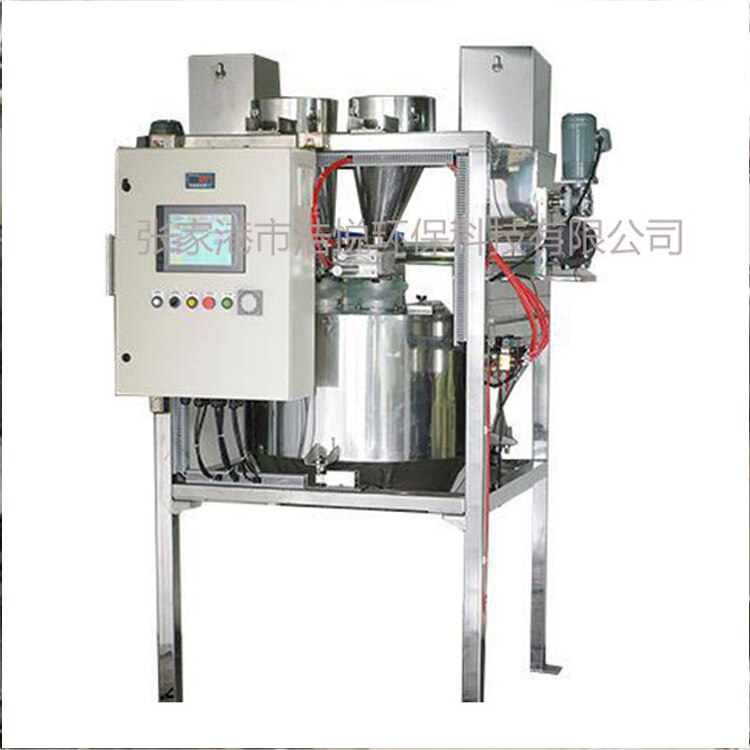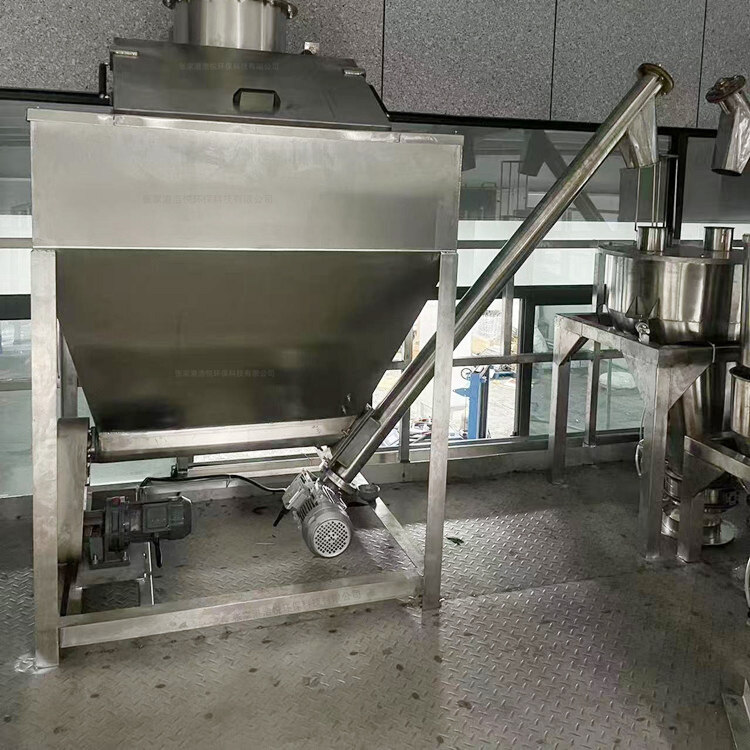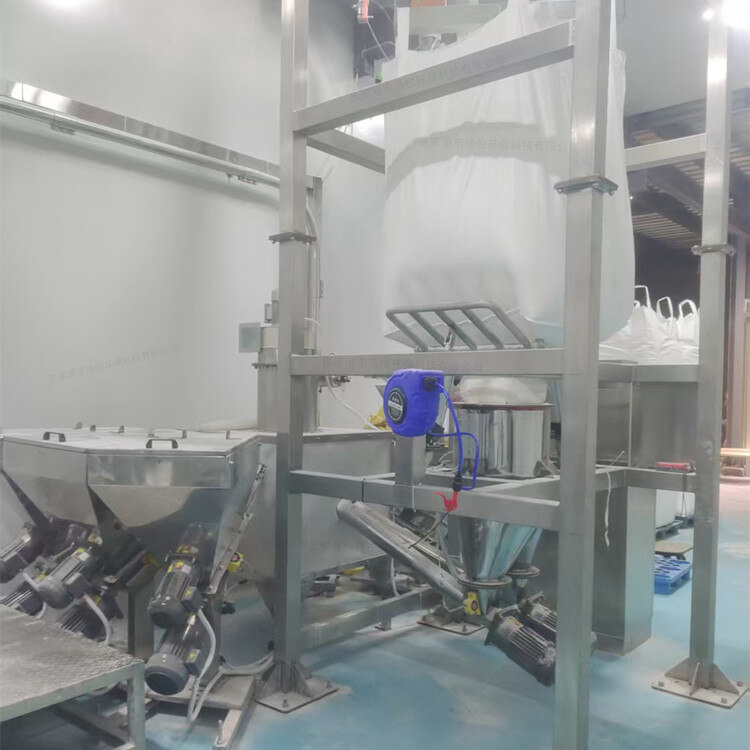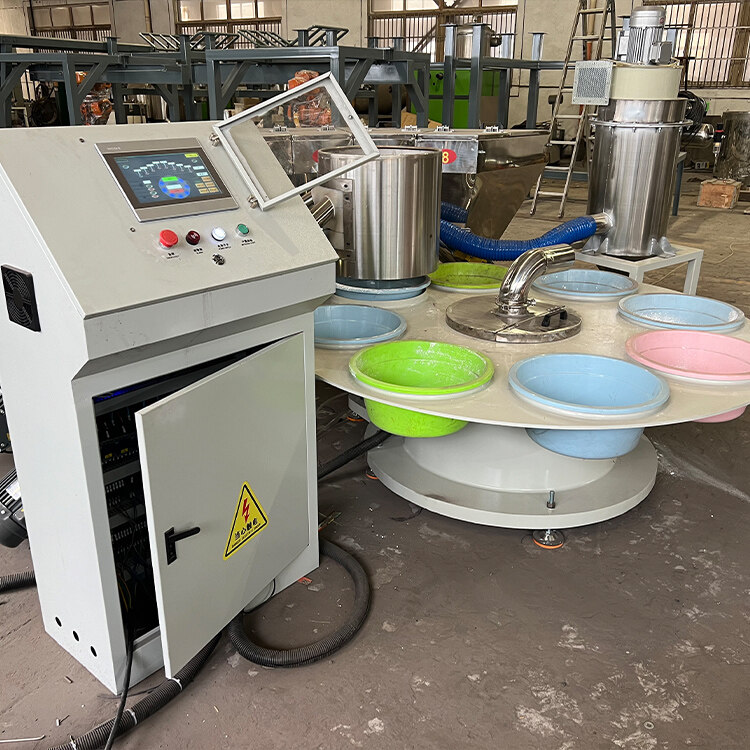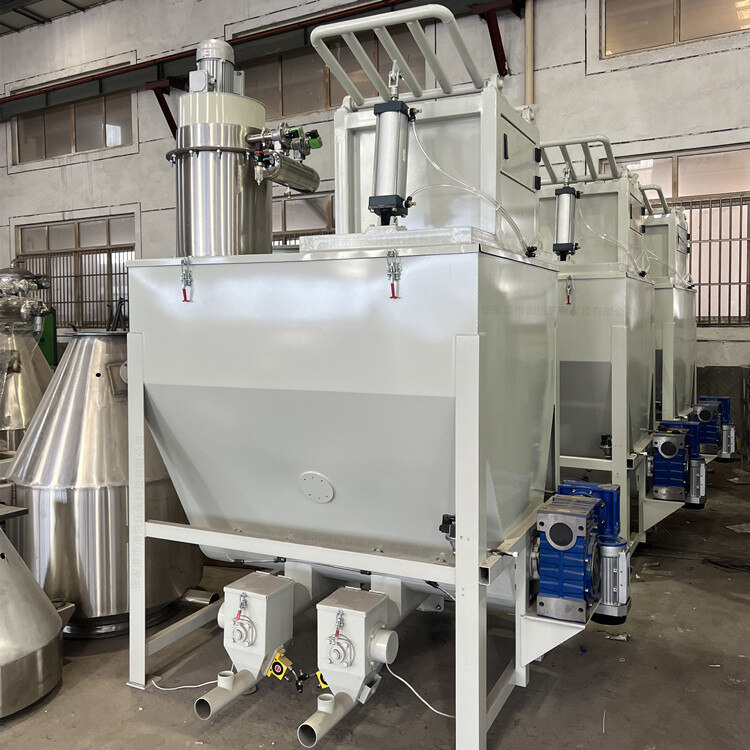- Introduction to automatic batching machine and fully automatic batching machine equipment
- The powder metering system tells you about the introduction of the mixing and drying machine
- 1000kg vacuum feeding machine
- Fully automatic small material batching system
- Research on Innovation of Automatic Weighing Machine Technology
- Design and operation of automatic batching system using PLC, industrial computer and frequency converter
Powder conveying system
- Category:Automatic metering and conveying equipment
- Hits:131次
- Release Date:2025-06-27
- Share:
- Inquiry
- Details
In modern industrial fields such as chemical, food, pharmaceutical, and building materials, efficient and stable transportation of powder materials is a key link to ensure continuous production operation. The powder conveying system utilizes principles such as airflow and mechanical motion to achieve automated transportation of powdered and granular materials from storage to processing. This system not only improves production efficiency and reduces manual intervention, but also effectively avoids dust pollution and material loss, playing an indispensable role in industrial production.
1、 Basic principles of powder conveying system
The powder conveying system is mainly based on two principles: pneumatic conveying and mechanical conveying. Pneumatic conveying utilizes the energy of airflow to transport powder materials along the direction of airflow in a closed pipeline, forming a gas-solid two-phase flow; Mechanical conveying relies on the movement of mechanical devices (such as screws, belts, chains, etc.) to directly push or pull materials to achieve displacement. Both principles have their own advantages and are applicable to powder materials and production scenarios with different characteristics.
(1) Principle of pneumatic conveying
Pneumatic conveying is divided into vacuum conveying (negative pressure) and pressure conveying (positive pressure) based on the pressure state of the airflow. Vacuum conveying creates negative pressure inside the pipeline through a vacuum pump, and the external atmospheric pressure presses the material into the pipeline, mixes it with the airflow, and transports it to the target location; Pressure conveying utilizes the positive pressure generated by compressed air to propel materials within the pipeline. During the transportation process, by controlling the airflow velocity, pipeline diameter, and material concentration, it is ensured that the material is transported stably without blockage.
(2) Principles of Mechanical Conveying
Mechanical conveying relies on specific mechanical structures to achieve material transfer. For example, a screw conveyor pushes materials along the axial direction through the rotation of spiral blades; Belt conveyors utilize the continuous operation of belts to move animal materials on the conveyor belt; The bucket elevator achieves vertical conveying of materials through the lifting and lowering of the hopper. These mechanical devices are driven by motors and coordinated with transmission mechanisms to achieve directional conveying of materials.
2、 Classification and characteristics of powder conveying systems
(1) Pneumatic conveying system
Vacuum conveying system
Composition and structure: It mainly consists of a vacuum pump, a suction nozzle, a conveying pipeline, a filter, a storage bin, and a discharge valve. A vacuum pump serves as a power source, generating negative pressure to attract materials; Filters are used to separate gas-solid mixtures and ensure that the discharged air is clean; The discharge valve controls the discharge of materials.
Advantages and Applications: It has the characteristics of fully enclosed, pollution-free, and flexible transportation, and is suitable for industries with extremely high hygiene requirements such as food and pharmaceuticals. It can prevent materials from being contaminated during transportation. Meanwhile, due to its flexibility in conveying distance and height, it is also commonly used for material transportation in small and medium-sized factories.
Pressure conveying system
Composition and structure: It consists of an air compressor, a sending tank, a conveying pipeline, a receiving tank, and valves. The air compressor provides compressed air, the sending tank stores the material and sends it into the pipeline, and the receiving tank is used to collect the material.
Advantages and Applications: Strong conveying capacity and long distance, suitable for high flow and long-distance powder conveying, such as in industries such as cement and chemical, used to transport materials from production workshops to storage warehouses or packaging stations. According to the pressure level, it can be divided into low-pressure (<0.1MPa) and medium pressure (0.1-="">0.3MPa) conveying systems.
(2) Mechanical conveying system
screw conveyor
Composition and structure: It consists of a spiral shaft, a material groove, a driving device, and an inlet and outlet. Weld spiral blades on the spiral shaft, rotate in the material groove, and push the material forward.
Advantages and Applications: Compact structure, good sealing, suitable for short distance horizontal or inclined conveying, commonly used for conveying powdery materials such as flour and cement. But the conveying distance is limited, generally not exceeding 30 meters.
belt conveyor
Composition and Structure: Composed of belts, rollers, drums, driving devices, and frames. The belt serves as a conveying carrier, supported by rollers and idlers, and circulates under the drive of the driving device.
Advantages and Applications: Large conveying capacity, stable operation, capable of horizontal or small angle inclined conveying, widely used in industries such as mining, ports, and building materials for conveying bulk materials such as sand, gravel, and coal.
bucket elevator
Composition and structure: It consists of a hopper, a traction component (belt or chain), a driving device, a casing, and an inlet and outlet. The hopper is fixed on the traction component and transported vertically or at a large angle along the track inside the casing by the driving device.
Advantages and Applications: With a small footprint, it is suitable for vertically lifting materials and is commonly used in industries such as grain processing and feed production. It is a storage or processing equipment that lifts materials from low to high places.
3、 Core components of powder conveying system
(1) Power plant
Vacuum pump: In vacuum conveying systems, rotary vane vacuum pumps, water ring vacuum pumps, and Roots vacuum pumps are commonly used. Rotary vane vacuum pump has high vacuum degree, suitable for small flow rate and high vacuum degree requirements; The water ring vacuum pump has strong moisture resistance and can be used to transport materials containing small amounts of moisture; Roots vacuum pump has a large flow rate and is often used in combination with other vacuum pumps to meet the needs of high flow conveying.
Air compressor: The power source of the pressure conveying system, which selects screw, piston or centrifugal compressors according to the conveying pressure and flow requirements. Screw compressors have high efficiency, good stability, and are widely used.
Motor: The power core of a mechanical conveying system, which adjusts the speed through a reducer to provide suitable driving force for screw conveyors, belt conveyors, etc.
(2) Transportation pipeline
The material of the pipeline is selected based on the characteristics of the material and the usage environment. Common materials include stainless steel, carbon steel, and wear-resistant plastic. Stainless steel pipes are corrosion-resistant and easy to clean, suitable for the food and pharmaceutical industries; Carbon steel pipes have high strength and low cost, and are commonly used in the chemical and building materials industries; Wear resistant plastic pipes are lightweight and have good wear resistance, making them suitable for transporting materials with strong wear resistance. Pipeline design needs to consider factors such as pipe diameter, length, and bending radius to ensure smooth material transportation.
(3) Control and monitoring device
The control system usually uses PLC (Programmable Logic Controller), combined with sensors (such as pressure sensors, flow sensors, and level sensors) to achieve automated operation. Pressure sensors monitor the pressure inside pipelines to prevent blockages or leaks; Flow sensor controls material conveying speed; The level sensor monitors the inventory of materials in the storage bin and achieves automatic feeding. At the same time, the system is equipped with a human-machine interface (HMI), which facilitates operators to set parameters, monitor operating status, and handle faults.
4、 Application scenarios of powder conveying system
(1) Food industry
In food processing, vacuum conveying systems are used for conveying materials such as milk powder, starch, and sugar powder to ensure that the materials are not contaminated and meet food safety standards. Its fully enclosed feature effectively prevents dust from flying, improves the working environment, and avoids moisture absorption and oxidation of materials during transportation, ensuring product quality.
(2) Pharmaceutical industry
Pharmaceutical production has extremely high requirements for the cleanliness and sealing of material transportation. The vacuum conveying system, combined with stainless steel pipes and food grade filters, achieves dust-free transportation of raw materials and auxiliary materials, prevents cross contamination, and meets GMP (Good Manufacturing Practice) requirements. In addition, the automation control of the system ensures the accuracy and traceability of material transportation.
(3) Chemical industry
In chemical production, pressure conveying systems are commonly used to transport materials such as fertilizers, plastic pellets, pigments, etc. The high-pressure conveying system can achieve long-distance and high flow conveying, transporting materials from the production workshop to the storage area or packaging station. For flammable and explosive powder materials, the system adopts explosion-proof design to ensure production safety.
(4) Building materials industry
Mechanical conveying and pressure conveying systems are widely used in the production of building materials such as cement and dry powder mortar. Spiral conveyor is used for short distance material transportation in the workshop; Belt conveyors achieve horizontal transportation of bulk materials; The bucket elevator completes the vertical lifting of materials; The pressure conveying system transports the finished cement to the bulk warehouse or packaging machine, improving production efficiency.
5、 The development trend of powder conveying system
Intelligent upgrade: Introducing IoT, big data, and artificial intelligence technologies to achieve remote monitoring, fault prediction, and automatic maintenance of devices. Optimize conveying parameters through data analysis to improve system operational efficiency.
Energy saving and environmental protection: Develop energy-saving vacuum pumps, compressors, and motors, optimize pipeline design, and reduce energy consumption. Adopting new materials and sealing technology to reduce dust leakage and achieve green transportation.
Multi functional integration: Integrating functions such as conveying, metering, mixing, and drying to form an integrated solution, reducing equipment footprint and improving production efficiency.
Safety and reliability improvement: Strengthen explosion-proof, anti-static, and anti-corrosion design, improve safety protection devices and emergency response mechanisms, and ensure stable operation of the system in complex environments.
As an important component of modern industrial production, the powder conveying system will play a significant role in more fields with the continuous advancement of technology, providing strong guarantees for the efficient, safe, and environmentally friendly operation of industrial production.


